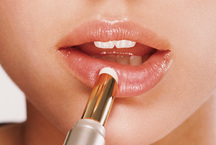
Fast and fatigue-free hair care at home - this is what sprays offer us for easy combing. In fact, what could be simpler and more pleasant than putting on the curls of a little precious elixir that instantly transforms tangled, naughty, "capricious" hair? But how to choose among the many bright and attractive flakonchikov really effective tool?
Criteria for choosing a good hair spray
To begin, let us decide what promises this product should fulfill. High-quality hair spray combines several important features:
- acts instantly - the hair immediately after use becomes softer and more docile, does not pull out, ideally combed from root to tip without damage and without the formation of nodules;
- does not make the curls heavier and does not require rinsing - the hair remains light and clean;
- gives shine and moisturizes;
- has a pleasant unobtrusive smell;
- conveniently sprayed (the smaller the spray, the better).
What are the sprays for easy combing
Sprays for easy combing can be single phase (homogeneous in consistency) and biphasic. In two-phase sprays, the lighter oil ingredients, rising up, form a separate fraction, therefore, the agent must be shaken well before spraying. This feature does not affect the effectiveness of the product: good sprays can be found both among single phase and two-phase spray.
Depending on the fantasy of marketers, sprays for combing hair are called: oil-spray, light oil, spray-lotion, spray-care, serum, elixir, express conditioner, and so on. You can learn a lot about the “uniqueness” of a particular medium from the advertising slogans of the companies producing them. However, in reality, everything is much simpler, and sprays differ from each other only by a different combination of the same main ingredients: silicones and oils.
Ingredients: silicone abilities
Regardless of the name, the composition of all the "brooms" for easy combing is about the same. The main part of them are silicones: cyclomethicone, dimethicone, amodimethicone and all other ingredients whose names end in -con, -siloxane and -conol. Silicones create a slippery film on the surface of the hair, “lock” the moisture inside the hair and smooth the cuticle, thanks to which the hair becomes smooth and shiny, easily combed, and retains its color longer if it is colored. In addition, the polymer film serves as protection from negative environmental factors: friction about clothes, heat, sunlight, sea and chlorinated water, and also glues split ends, preventing them from splitting even more. Of course, all these effects are purely external and keep to a maximum until the next shampooing.
In the cosmetic industry uses a lot of silicones, but the most favorable for the hair are:
- Phenyltrimethicone (Phenyltrimethicone) - gives a strong shine and softness to hair, protects them from thermal effects;
- Cyclomethicone (Cyclomethicone) and its counterparts Cyclopentasiloxane, Cyclohexasiloxane - give silkiness and promote the absorption of hair substances from the spray;
- Hydroxypropyltrimonium hydrolyzed wheat protein - a combination of silicone and wheat protein, fills hair stems with keratin, good for severely damaged hair;
- Dimethicone (Dimethicone, also called Polydimethylsiloxane). The most popular silicone sprays for combing. It is widely used to achieve the instant effect of silky and well-groomed hair and is found in most professional brand spray products. More "heavy" on the hair than the first three silicone, therefore, requires careful and metered use.
Of course, the silicones in the spray are not healers for hair, but they noticeably improve their appearance and facilitate combing. Excessive “silicone” care can lead to heavier hair, dullness and even fragility, so even the best-quality and effective comb for combing should be used in reasonable quantities.
Oils, vitamins, amino acids in sprays for combing: is there any use of them?
In the composition of the spray for easy combing you can see the auxiliary ingredients: natural oils, proteins, vitamins, etc. Consider the effect of these components on the hair.
Natural oils
Most often, argan, avocado, jojoba, coconut, linseed, corn, macadamia nuts, etc. are added to the sprays. Oils are quite heavy care, especially for European-type hair, but their duet with silicones creates a very comfortable, light and at the same time beneficial substance for the condition of the hair. The oils give shine and elasticity, “pacify” the disobedient, tough, dry hair and provide UV protection, and the silicones help the oil to penetrate deep into the hair. The most widely advertised today - Argan tree oil - really worthy of praise. It is light, well absorbed, does not make the curls heavier and gives them a living shine.
Proteins
Most often it is keratin, silk proteins, proteins of wheat and rice. Their use in caring hair sprays is justified. The proteins fill the damaged areas of the hair trunks, make the hair more elastic and denser, and thus help to comb the curls easily and without damaging their structure.
Vitamins, amino acids, peptides, arginine and other "useful" supplements
Hair is an inanimate matter that cannot be fortified, rejuvenated, renewed or nourished, therefore these ingredients that are relevant to many other cosmetics are absolutely useless for improving the appearance of hair. It makes no sense to expect from them any effect and overpay for beautiful promises.
So, the easy-to-comb spray has long ceased to be just a remedy for tangled hair, becoming a convenient, economical and safe way to make your hair well-groomed and beautiful. And “techinfus.com” helps to choose the best, as always.






